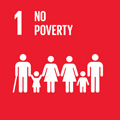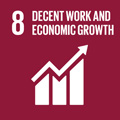- Docente: Antonella Samoggia
- Credits: 3
- SSD: AGR/01
- Language: Italian
- Teaching Mode: In-person learning (entirely or partially)
- Campus: Bologna
- Corso: Second cycle degree programme (LM) in Agricultural Sciences and Technologies (cod. 9235)
-
from Sep 17, 2025 to Dec 03, 2025
Learning outcomes
The course provides knowledge on tools for measuring the economic and financial results of companies in support of their decision-making processes. At the end of the course, students are able to apply the main analysis tools to assess the company's economic and financial performance, to identify the determinants, to produce useful information on the individual activities carried out, also in order to optimize the resources available, and to fine-tune the company's strategies and their control.
Course contents
Didactic unit 1 (9 hours):
BUSINESS COST ANALYSIS AND ANALYSIS AND PLANNING MODELS
1. Corporate Costs
o 1.1. Mixed cost
o 1.2. Contract and process costs
2. Models for profitability analysis
o 2.1. Cost-volume-profit ratio
o 2.2. Break-even point and safety margin
Didactic unit 2 (9 hours): STRATEGIES OF BUSINESS AND MEASUREMENT OF PERFORMANCE
3. Enterprise strategies and investment planning
o 3.1.Master budget
o 3.2. Measuring performance in organisations
o 3.3. Costs and the decision-making process
o 3.4. Decisions on internal or external production
o 3.5. Pricing decisions based on costs
Exercises and deepening of knowledge (12 hours)
Prerequisites. No prerequisites are required."
Readings/Bibliography
At the end of each module, the teacher will provide students with specific teaching material (in electronic format) that supplements the notes taken in class. However, this material is not sufficient to prepare for the exam.
As reference texts we recommend: R.H. Garrison, E.W. Noreen, P.C. Brewer, M. Agliati, L. Cinquini - Programming and control - managerial accounting for business decisions, McGraw-Hill 2011. Chapters 2, 5, 8, 11, 15
Teaching methods
The module is divided into three teaching units, of which the last (12 hours per module) includes seminars and exercises. The other 18 hours of each module are represented by frontal lessons. In the context of the exercises, as in the frontal lessons, the whiteboard and the slides support will be used to carry out exercises for the application of some specific topics dealt with in the lesson.
The seminars, if present, will be able to deepen themes identified during the lesson and considered of particular interest.
Assessment methods
The course is divided into two modules, the exam is unique.
The course Business Management and Business Strategy is divided into two modules:
-
Module I (code 85867)
-
Module II (code 85868)
There is a single exam for both modules.
Exam Structure
The exam consists of two parts:
-
Written Test
-
Covers topics from the syllabus of both modules.
-
Includes both open-ended and closed-ended questions.
-
Each question is worth 1 to 5 points, based on difficulty.
-
-
Oral Presentation
-
Requires a presentation, using PowerPoint or other software, on a transversal topic chosen by the students and relevant to both modules.
-
The presentation is preferably to be delivered in a group (up to 3 students).
-
Each student must present a portion of the work.
-
The presentation can be given in Italian or English.
-
Evaluation criteria:
-
Mastery of the topic
-
Clarity of exposition
-
Quality and appropriateness of the material presented
-
Critical thinking skills
-
-
Grading
-
The final grade consists of 90% from the written test score and 10% from the oral presentation evaluation
Additional Information
-
Exam dates will be available on Almaesami.
-
The final exam can be taken in English (The exam can be given in English).
Teaching tools
Whiteboard, video projector, computer, internet access. All lessons are held with the help of presentations in ppt
Office hours
See the website of Antonella Samoggia
SDGs




This teaching activity contributes to the achievement of the Sustainable Development Goals of the UN 2030 Agenda.
